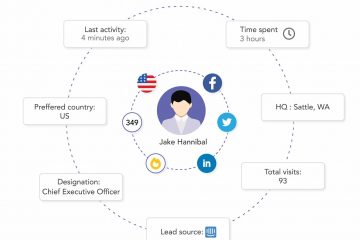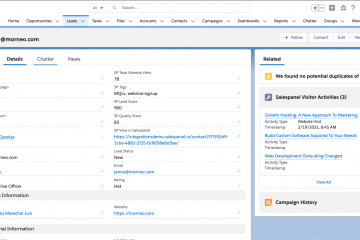How To Determine Your Customer’s Pain Points
Any marketer knows that positive relationships with customers is key to building a unique brand. And that can be done by identifying pain points. Knowing how to solve your customers’ problems can bring you one step closer to having a loyal bond with your clients. It doesn’t matter if you are a large company or a small business; the only way you can succeed is by solving customer needs.
75% of companies have reported enhancing customer experience as their primary goal. However, we don’t need to tell you just how overwhelming and challenging it can be to fix client pain points. Regardless, if you wish to acquire and retain customers, determining their issues is the way to go.

Image Source: REVE Chat
What Are Customer Pain Points?
Before we learn how to identify customer pain points, let us know what they are. Customer pain points are problems your clients face that you can solve with your product or service. To put it in another way, customer pain points are unmet demands waiting to be met by your company.
Just like your clients can be diverse, their pain points can be diverse too. However, what makes identifying them so tricky is the fact that not all customers are aware of their own pain points. Thus, it is your company’s responsibility to make your customers realize their pain points and convince them that your product or service can fix them.
Thus, if you wish to make sales and get your products off the shelf as fast as possible, you must understand where your customers need help. By understanding their needs, you can win their trust and loyalty and create an appropriate value proposition. Clients are your bread and butter, and you can only hold on to them by listening to what they have to say.
Types of Customer Pain Points
As already mentioned, since your customer base is diverse, it is inevitable that the pain points will be diverse too. As a result, customer pain points are broadly categorized under four types – finance, productivity, process, and support pain points. We will discuss all of them individually in this section.
1. Financial Pain Points
This is perhaps the most important pain point of all. Customers are always looking for cost-effective solutions, and if they believe that they are currently spending a lot of money on their current purchases, it is your company’s responsibility to convince the clients that your products or services are cheaper. Remember that products or services may or may not be cheaper, but you need to make your customers realize that it’s worth the money since the quality is better and the products will last a long time.
Account managers and customer support teams must fully comprehend competitor benchmarks, customer needs, and budgets if they wish to provide customer-friendly services. Your business needs to come up with strategies for budget-friendly options and convince the customers that the money is well spent.
2. Productivity Pain Points
Productivity pain points occur when your customers feel like they are wasting too much time on something. Then, it becomes your business’s job to make customers understand that your products or services will help them save more time. In this fast-paced world, clients always look for shortcuts and products to help them achieve efficiency.
That is where you need to address that pain point. Show that the products your customers are using or their current workflows are inefficient. To be more believable, you can also demonstrate in numbers, just how much time, effort, and energy your products save.
3. Process Pain Points
Process pain points refer to operational problems. As a business, you need to convince your customers that your products are easy to use and more convenient. However, if you are facing operational inefficiencies, you are experiencing process pain points. Be it a piece of software or a cooking item; your business team must persuade the lead list by showing how easier to use your products are.
For instance, for clients who spend hours cooking up dinners, pre-packaged meals they can heat up in the oven or microwave might be a better option. It would help if you offered more suitable solutions to the complicated processes for your customers.
4. Support Pain Points
Last but not least, support pain points refer to customer support inefficiencies that your clients may be facing. In this category, the clients may think they are not getting adequate support and are, thus, looking for services that can give them that support. Customer service is one of the most critical aspects of any business, be it small or big. And, when you have a helpful team of professionals, customers will feel heard and cared for.
Customer support pain points can include issues like a delayed response, unavailability in preferred channels, insufficient product knowledge, etc. Such problems will impact customer loyalty and retention, losing precious clients. Thus, as a business, you must make sure that your prospects are getting the appropriate attention.
How to Determine Your Customers’ Pain Points
Now that we have learned about the different types of customer pain points, let us understand how to identify them. The biggest problem with determining customer pain points is that there is no one particular solution. Customers vary widely, which is why their pain points vary too. However, once you successfully identify them, it becomes easy for both the marketing and sales team to advertise the products better.
1. Conducting Qualitative Customer Research
Want to know the easiest way to understand client pain points? Listen to them closely. You need to solve the problem from the customer’s perspective. You can conduct online surveys to understand where your services may need improvement. Surveys are a great way to engage with your audience directly and get relevant information.
One of the biggest complaints with businesses is bad customer service. To increase the retention rate, you must have teams that will have frictionless conversations with clients. Apart from surveys or questionnaires, you can also understand your customers’ challenges by gathering them in pop-up shops or events.
Social media platforms are a great way to learn more about your customers. You can find leads on social networks such as LinkedIn, Facebook, or Twitter and keep track of what they say about products or services. On social media, customers openly share their experiences and request help. By reading all such frustrations, you will know what your prospects need solutions for.
This is called social listening. Using this process, you will be able to read up on reviews and mentions of your product and see how they impact your prospects. You can also learn about how other products are performing and try to incorporate that into your business.
3. Set Up Live Chat
To understand what your clients want, you must find a convenient way to reach out to them, and live chat is a great option to use when they are on your website. It allows you to identify customer needs immediately and, thus, offer solutions that will help. It is a great way to collect data about your customers too. If you use the right live chat software, you will have backups and chat logs of such conversations, which you can review later to learn more about client demands and how they can be better assisted.
What’s more, live chats also help to build a trustworthy relationship with your customers, which is important for every business. In today’s age, nobody likes to wait around for responses. If your customers receive immediate responses to their issues, they will have more faith in your business. With the help of customer-driven data, you can produce more personalized services, which will help with customer retention.
Final Thoughts
Clients are what make up a company. Their opinions, views, and experiences can make or break a business. Thus, if your company wishes to excel, it must find ways to listen to the customers and find out their main problems. However, understanding the needs of your prospects is easier said than done.
You can only meet client goals by listening to their point of view. You need the right team, customer support tools, and the effort to take the feedback and work on it. To enhance client relationships, you must completely comprehend customer demands and their journeys and remove friction to achieve a smooth experience.
Sell more, understand your customers’ journey for free!
Sales and Marketing teams spend millions of dollars to bring visitors to your website. But do you track your customer’s journey? Do you know who buys and why?
Around 8% of your website traffic will sign up on your lead forms. What happens to the other 92% of your traffic? Can you identify your visiting accounts? Can you engage and retarget your qualified visitors even if they are not identified?



